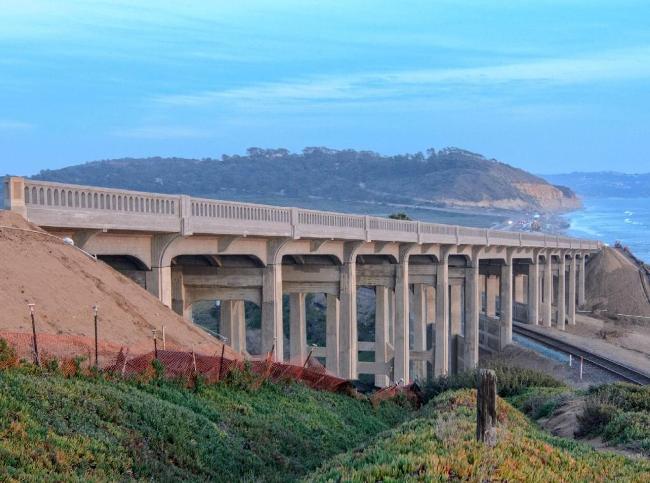Precast pretensioned adjacent member bridges, consisting primarily of concrete box beams, have been in use since 1950 in the United States. Other non-box elements, including tee-beams, multi-stemmed tees, inverted tees, deck bulb-tees, solid and voided slab beams, and U-shaped beams are also used in adjacent member bridges.
Recent trends show an increase in the use of adjacent, non-box, non-I-beam bridge beam elements. Although box beam elements are frequently used in an adjacent configuration with top flanges in close contact, they can also be used in a spread configuration, similar to conventional I-beam bridges. The 2006 National Bridge Inventory (NBI) shows there are 53,874 box beam bridges presently in service in the United States. Of this total, 9,988 (18.5%) are of spread configuration, with the balance adjacent. Of the total, 8,326 (15.5%) are multiple spans made continuous, with the balance simple spans.

According to the 2006 NBI, box beam bridges account for 9.0% of the total 597,340 bridges in the United States. Since box beam bridges are typically used for shorter spans and the NBI only considers bridges with spans of 20 feet or more, the number of these bridges is likely even higher. Precast concrete box beams are still widely used in new bridge construction today. Approximately one-third of precast bridges built over the past decade are box beam bridges. Box beams are the most common element used in adjacent member bridges.
Many agencies have refined their design and construction practices to improve the performance of box beam bridges. In the late 1980s and early 1990s, problems associated with longitudinal reflective cracking above joints were reported and diagnosed. Refinements to previous practices have significantly reduced or eliminated this cracking issue.
In response to the wide use of concrete box beam bridges, improvements in design and construction practices, and the recent increase in use of non-box adjacent member bridges, the Precast/Prestressed Concrete Institute (PCI) Committee on Bridges established the Subcommittee on Adjacent Member Bridges. This subcommittee is charged with the task of preparing this report on the state-of-the-art of precast/prestressed adjacent box beam bridges. This report presents a discussion of current practices, responses to a survey of US states and Canadian provinces regarding box beam bridges, and selected case studies. Also included is a comprehensive reference list for related information.